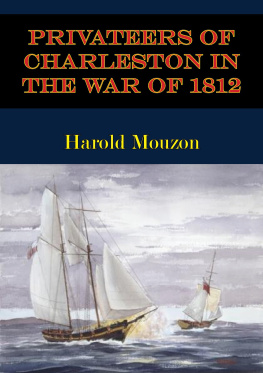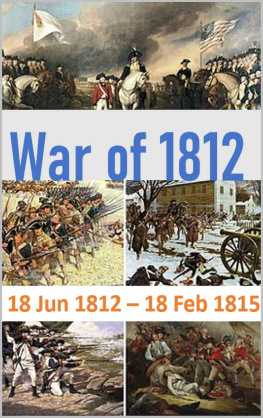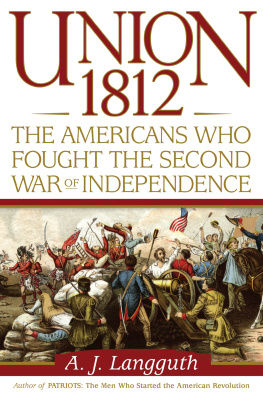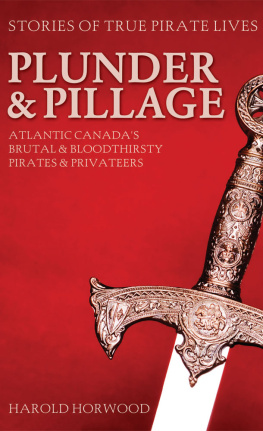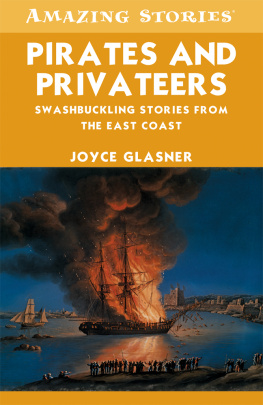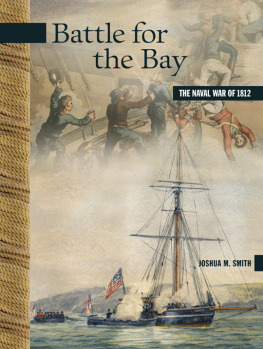This edition is published by PICKLE PARTNERS PUBLISHINGwww.picklepartnerspublishing.com
To join our mailing list for new titles or for issues with our books picklepublishing@gmail.com
Or on Facebook
Text originally published in 1954 under the same title.
Pickle Partners Publishing 2015, all rights reserved. No part of this publication may be reproduced, stored in a retrieval system or transmitted by any means, electrical, mechanical or otherwise without the written permission of the copyright holder.
Publishers Note
Although in most cases we have retained the Authors original spelling and grammar to authentically reproduce the work of the Author and the original intent of such material, some additional notes and clarifications have been added for the modern readers benefit.
We have also made every effort to include all maps and illustrations of the original edition the limitations of formatting do not allow of including larger maps, we will upload as many of these maps as possible.
PRIVATEERS OF CHARLESTON IN THE WAR OF 1812
By
HAROLD A. MOUZON
TABLE OF CONTENTS
Contents
I. THE FIRST LITTLE SCHOONERS
The United States declared war on England on June 18, 1812, but the news did not reach Charleston until June 24. An act authorizing the commissioning of privateers was passed by Congress on June 26. On July 8 a correspondent who signed himself I.S. was writing in Charlestons evening newspaper, The Times:
Whether it be from want of capital, or suitable vessels, I know not, but certain it is, that Charleston is the least prominent of any of the Cities on the Continent, in equipping Privateers, or small private Vessels of War, calculated at all times to annoy the commerce of the enemy.
I. S. was perhaps a little too impatient. The day before his letter appeared the Times had announced that two pilot-boat schooners were fitting out in Charleston as privateers, Mary Ann and Nonpareil; and on the very day of his complaint Jeremiah Murden applied to Simeon Theus, Collector of the Port, for a commission for Nonpareil as a cruizershe measures nineteen 47/95 Tons, calculated to carry one Six pounder & Thirty men with muskets & side arms, to be commanded by Henry B. Martin.
Nonpareil was the first privateer out of Charleston, sailing on July 10,
Nonpareil seems not to have taken another prize. She sailed to the Bahamas and on July 29 was taken by the British brig of war Decouverte, which Captain Martin unfortunately mistook for a merchantman and attempted to board from his tiny cruiser. News of the outbreak of war had not yet reached Nassau and Lieutenant Williams, commanding Decouverte, first heard of it from the too-rash Nonpareil. On August 14 Captain Martin wrote his wife from Nassau:
From him (Williams) I received every politeness, and have ever since had all the lenity that a prisoner of war could expect, being in so small a vessel, as there is no parole unless the vessel is much larger than ours. I am in hopes there will be an exchange soon, and I shall stand a chance to be one of the first, as I have petitioned the President by this conveyance.
Martins hopes for an early exchange were not disappointed and on November 2 he and eighteen of his crew reached Charleston in the cartel schooner Nassau.
The second privateer out of Charleston was Mary Ann. She sailed on July 18, 1812, The violently Republican and ultra-warlike Investigator, a newspaper which had commenced publication only a few days before, waxed positively lyrical over Mary Anns exploits.
These three days past we have enjoyed a sight, which ought to enrapture the bosom of every American. We have beheld a sight which has not gratified the patriotic feelings of the citizens of Charleston for the last thirty years. We have seen the American flag waving above St. Georges Cross. Soon will the Leviathan of the deep learn what may be expected from a free and insulted nation. Should the fleets of Britain bridge the main, yet she shall not be able to protect her commerce from the constant and galling annoyance of individual adventure. The two Brigs which were brought in by the Mary Ann privateer, were armed; yet how easily did they yield to the well directed musketry of a handful of gallant Republicans. * * * You who have not seen the American Flag above that of our enemy, take a walk to Prioleaus wharf and enjoy the reality. Native Americans, you must be gratified. Adopted citizens, you must rejoice. Patriots of 76, your evening of life must be brightened.
Fired no doubt by these eloquent words, Mary Ann sailed on her second cruise on August 29.
When Mary Ann herself returned, she was sold at auction by her owners on October 30;
Poor Sailor, which appears to have been the third privateer to sail from Charleston, had a brief career. She was a forty-five ton schooner with one six-pound gun and sixty men. A few weeks later there was a rather odd little incident. All the Charleston newspapers carried items similar to this in the Investigator for September 22:
The Privateer Schooner Poor Sailor, Captain MLachlin, who sailed from this port on the 1st of August last, arrived off Sullivans Island last evening. Captain MLachlin came up to Mr. Towers Hotel, at that place, about 1 oclock this morning, and reported, that he had taken Five Prizes, including a Sloop which sailed from this port for New York yesterday morning, with $30,000 in specie on board, which he had ordered for Savannah. Captain MLachlin after procuring some water, went on board with intention (as he said) of convoying the said sloop to the port of Savannah. Captain MLachlin further reported, that he saw off the bar last evening, a British Brig of War of 14 guns.
Next day the Investigator, like the other papers, had to take it all back.
The account of capt. MLachlin, of the Poor Sailor, having come up to Sullivans Island about the middle of the night for water, as published in the Investigator of yesterday, seems not only to be destitute of foundation in truth, but a gross imposition either on us or our informant. Time will, no doubt, develope this mysterious business. In the mean time, we hope the British 14 gun brig, said to be off our bar, has not been supplied with water in the name of capt. MLachlin.
Poor Sailor never came home to develope this mysterious business. A letter from Kingston, Jamaica, dated October 4, brought the news that she had been taken by H.M.S. Garland and sent in to that place.
The history of Rapid, a privateer schooner which fitted out in Charleston and sailed on August 18, 1812, She fought a British privateer in the Bahamas, boarded, took and burned her. On September 8, according to a letter from Rapids captain to his owner, he manned his boat with five men and went ashore for water. Returning to the boat they found a party of armed men in possession. The account continues:
They then made off some distance, and the Captain made a proposal to exchange the English Captain and the same number of English seamen (from the burned privateer), for himself and men, which was agreed to; but when they came forward, they were made prisoners of, and the agreement not adhered to.
Thereafter Rapid took the schooner Comet, of two guns, laden with sugar, beeswax, tobacco and dry goods, and sent her in to Savannah. She also captured the schooner Mary, but ransomed her on account of not being able to spare men enough to bring her home.
Captain George Coggeshall, who had himself commanded privateers in the War of 1812, tells of the end of Rapids career in his History of the American Privateers and Letters-of-Marque (page 159).


